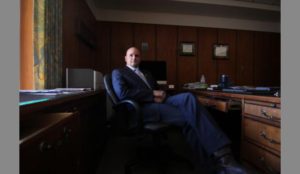I read with some interest a story this week about the Amarillo City Council approving a contract with American Airlines that sets up direct flights between Amarillo and Phoenix, Ariz.
The non-stop flights begin in April. The contract will be for one year; American Airlines will decide at the end of that year whether to extend it depending on its profitability.
My sincere hope is that American keeps the jets in the air between AMA and PHX.
Rick Husband Amarillo International Airport has been a favored lure for the city as an economic development tool. The Amarillo Economic Development Corporation once subsidized American Airlines jet service between AMA and Dallas Fort-Worth International Airport; AEDC took a portion of the sales tax revenue it collects and paid the airline to maintain jet service.
AEDC eventually ended the subsidy. The airline dropped jet service for a brief period, but since has restored full jet service to DFW. It now will fly jets out of Amarillo to Phoenix Sky Harbor Airport.
I’ve long touted the value of Amarillo’s air service to my friends and colleagues for as long as I have lived here. We don’t have many air carriers serving this community — American, Southwest and United. But two of those carriers, American and United, have plenty of international flights. When you depart AMA aboard either of those carriers, you are essentially just one stop away from connecting to flights that will take you anywhere on Earth.
Southwest is a highly profitable regional carrier and AMA gets service not just to Dallas Love Field, but also non-stop jet service to Las Vegas, Nev.
While much of our attention — mine included — has focused on downtown revival and on the extensive highway reconstruction along Interstates 40 and 27 as well as on Loop 335, we also can look with considerable pride at the airport that serves the Texas Panhandle.
I once spoke with Sarah Freese, the former aviation director at AMA, about the possibility of getting more carriers to serve this airport. She was hopeful at the time of attracting at least one more carrier. Freese has since moved on and I don’t know the status of the city’s effort to lure more carriers here. I hope it hasn’t withered away.
Amarillo’s airport remains a potentially big draw that will lead to the city’s brightening economic future.









